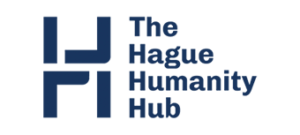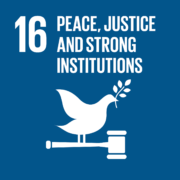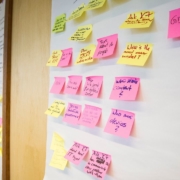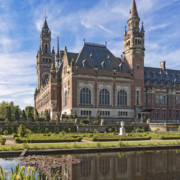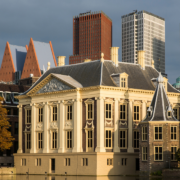What is peace and justice? How can we increase citizen engagement with SDG16?
This topic emerged as a theme of interest during the COP#1 session and was explored further at the COP#2 session. This is a call to bring the discussion forward towards action.
What can and do citizens add in an everyday context, add to peace and justice? How can governments connect to that and use that? How can communities of citizens become a part of everyday peace and justice care, such as in signalling and preventing disturbances, crime and hazards to wellbeing? What does that imply for the role of the government? Can government services be community centered, that is, enable the community to care for peaceful and just interaction?
Goal: Identify practices that promote citizen engagement and will also help our practice of promoting peace and justice. What does that ask of us as practitioners, of citizens and government? What practices can we co-create with this goal in mind?
Getting citizens engaged seems like a very hard task. Educational events can be a key to create more citizen engagement and a tool to reach a wider audience. Justice initiatives should be as open as possible.
Next steps: Work together on practical ways of increasing citizen engagement.
Proposed session by Lucien Stöpler with the goal to figure out how to implement the following two programs:
During the CoP 1 in the workshop Citizen Engagement, a program was conceived:
- Preventing known injustice in the neighborhood
- Sensitization and invitation of citizens to discuss with policymakers on how to eliminate known threats to justice and peace. The example is found in a program from Calí, Colombia and focused on gang-violence and the civil war. However, topics for local relevance could be obtained through
- A local court (the example is from Buenos Aires) would hold discussions on relevant (by number or because of the impact) criminal court cases. Also on sensitization and prevention.
- Educational programs can be designed to educate youth on known justice and peace issues.
- Educational programs (for professionals or trainees) to distribute the material and provide opportunities for action and engagement to prevent these issues.
- Help the police implement their program Allies
- Dutch police is implementing Allies, a program against radicalisation
- Core of this program is engaging with networks of people vulnerable to radicalisation to extreme islam beliefs, as well as those who might be familiar with them, such as imams, teachers at schools with high population of vulnerable people.
- The police is good at engaging citizens, but they need a broader movement. How can more people become involved to make our society more peaceful and inclusive so that people do not become engaged in violent extremism.
- Schools are a prominent place of influence: both to recruit for extremist activity and to prevent radicalisation
Results:
- Who is our target audience.
- Why should stakeholders engage in these activities.
- Who, what, how to organise these programs and reach high number of citizens.
- A clear vision of what these citizens will learn and the influence of the program.
- Evaluation model.
Get involved: Reach out to Lucien Stöpler (Justice in Practice) via email or Slack
